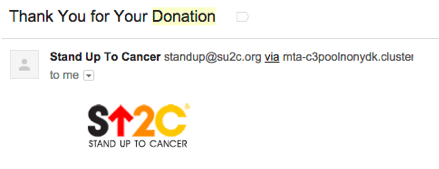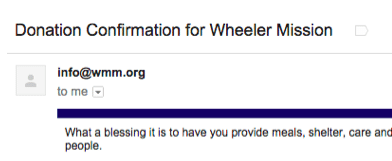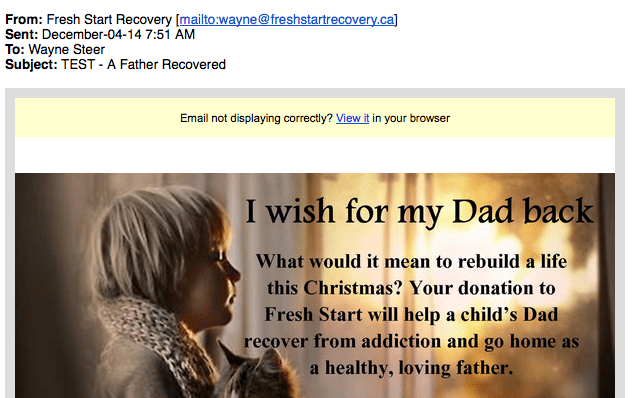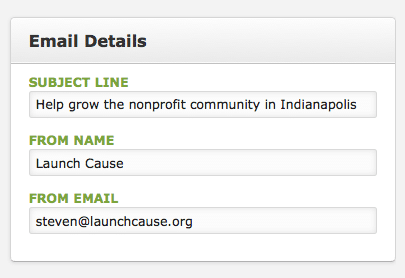When auditing email communications, there is a lot to consider: the timing of the send, the subject line, the style and branding of the email, and of course the content of the email itself.
But there’s one small detail that is often overlooked.
What is it?
The sender’s email address.
Why does the sender’s email address matter?
Every email has to come from somewhere, and in the case of a mass or automated the email, the sender’s address can be specified.
The sender’s email address is one of the primary elements of an email’s content, second only to the subject line. And while it may seem like a small detail, it can have a deep, albeit subconscious, impact on the recipient.
Take a look at these donation confirmation emails:
Did you notice something about all of these emails? The sender’s email address is role-based.
What is a role-based email?
A role-based email is an email addressed assigned to a department or purpose, rather than a human user. For example, [email protected] is an example of a role-based email, as opposed to something like [email protected].
Typically, organizations will employ a role-based email when they want to send information out on behalf of the corporate entity and not necessarily want to receive responses or make one single person responsible for receiving those responses.
It’s typical for mass emails, announcements, updates and transactional emails to come from a role-based address, but savvy organizations are wising up.
Why are role-based addresses bad?
There are many technical reasons to avoid role-based addresses. For example, they often trigger spam filters, and many email clients and providers reject them outright. It’s also hard to moderate replies to emails coming from a generic mailbox.
However, for nonprofits, there is an even more compelling reason to avoid them: they’re impersonal.
If you believe the saying “people give to people, not charities,” then you should avoid using role-based email addresses. After all, can you truly see an appeal or a gift acknowledgment as personal when it comes from [email protected]? Also, how can a donor respond or reach out to you? Will they genuinely feel there’s a way to communicate?
In most cases, you can specify the sender’s name and email address as two separate elements:
(From: Fresh Start Recovery [mailto:[email protected]])
Most email clients will let you specify this information:
Here are some role-based addresses that you should absolutely avoid sending emails from:
- no-reply@
- info@
- development@
- fundraising@
- (organization-name)@
- or something missional like hope@, relief@, change@, etc.
What if I want to protect an employee’s email address?
It’s fair to not want to publicly display or distribute a high-ranking employee’s (like an ED or CEO’s) email address.
If you absolutely can’t share their email address publicly, consider creating a new address that looks like theirs but it slightly different.
For example, if your CEO’s day-to-day working email address is [email protected], consider using [email protected] as the sender of an appeal, newsletter or acknowledgement.
If you do this, be sure to diligently moderate the inbox for any replies or important messages.
Are role-based email addresses ever useful or appropriate?
Role-based email addresses are certainly useful in cases where you want to receive emails, but not necessarily send them. For example, listing [email protected] on your volunteer page as a way to get more information. However, you’ll likely find that a real person’s email address (who is responsible for that department, event, etc.) will be more warm and inviting.
So ditch the role-based email address wherever possible. You’re not a robot, so why dress like one?







